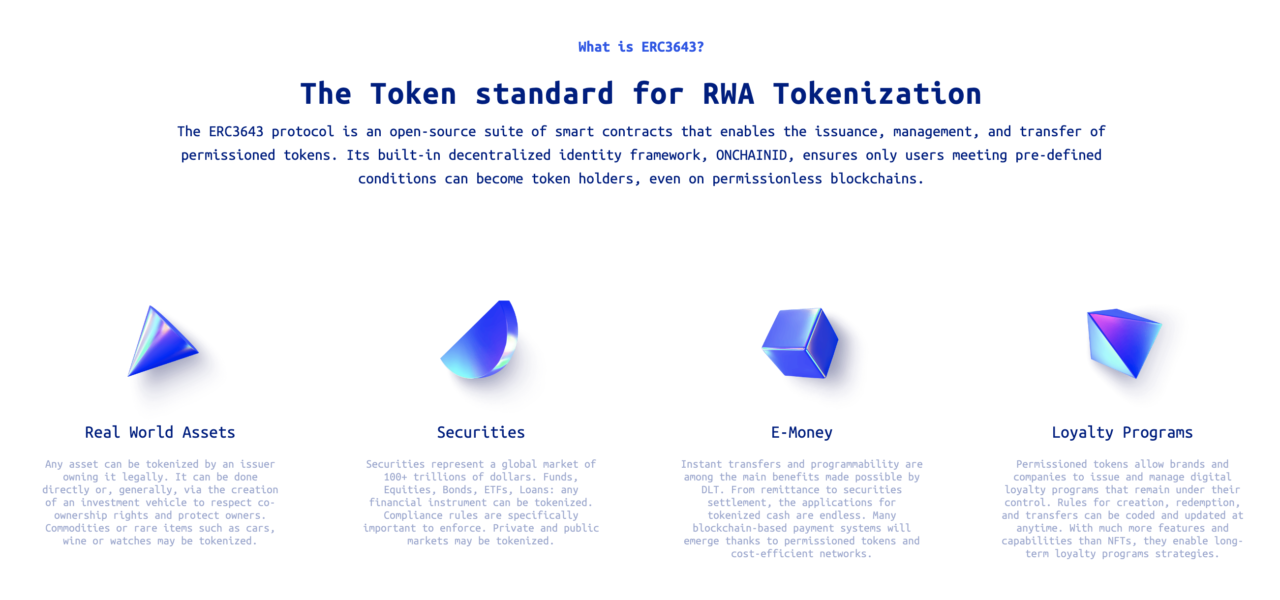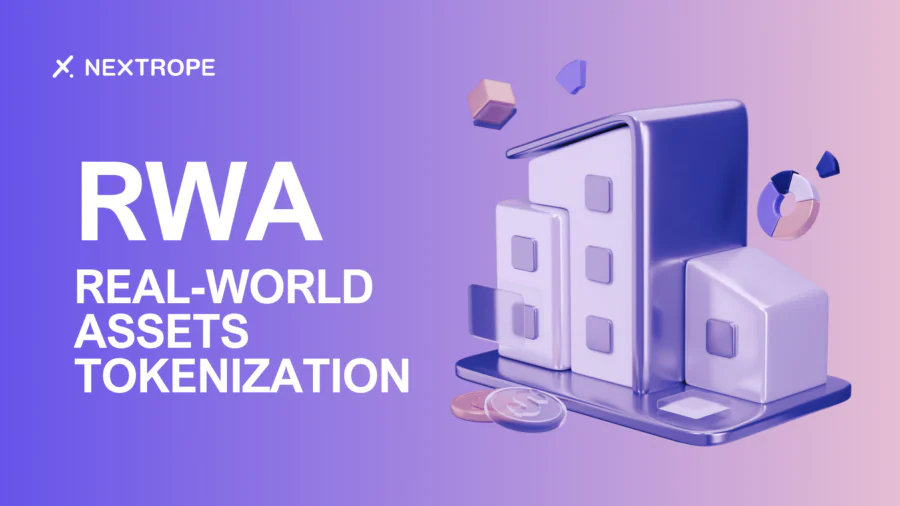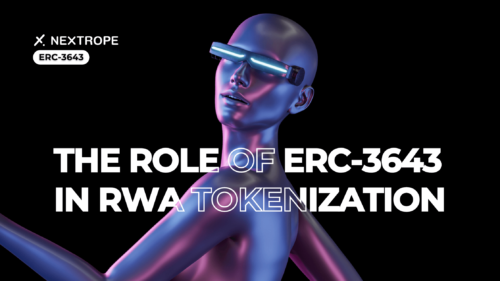Historically, the conversion of assets from physical to digital formats has been fraught with regulatory ambiguities and burdensome accessibility for micro-investors. Until recently, technological limitations and a lack of operational legal clarity have hindered the effectiveness of tokenization. The development of ERC-3643 represents a complex yet essential endeavor, traversing practices array while maintaining strict mandates across jurisdictions. Overcoming these barriers seems to have been the driving force behind the creators from the start. Thereupon, we invite you to acquire an impact of ERC-3643 on the RWA tokenization with us!
- Redefining RWA Tokenization with ERC-3643
- Integration of ERC-3643 into Global Supply Chains
- ERC-3643 and the World of Art
- ERC-3643 Transforms Intangible Assets Offerings
- AI and ERC-3643 Join Together
- Unraveling the Potential of Tokenized Infrastructure Projects
- Healthcare Enhancements through ERC-3643 Implementation
- Conclusion
Redefining RWA Tokenization with ERC-3643

Source: ERC-3643 Association
Diversification: The ERC-3643 standard assigns on-chain representation of broad resources ointment. This involves issuing digital tokens that stand as physical product quantity, value, and profit shares.
Exposure: A fractional ownership feature embedded into the token lowers an entry barrier while supplying more liquidity into the market and attracting less affluent individuals.
Transfer: The process of rights ownership and transfers has been formed into a permission-need framework.
Innovation: ERC-3643 tokens can be structured in the form of a basket of commodities, involving different market segments. Additionally, the protocol enables the creation of commodity-backed stablecoins, providing a lower-risk investment option.
Regulatory Versatility: Programmable token functions, multi-layered access controls, compliance checks, automated reporting, and other security mechanisms - these all prioritize alignment with both current and future regulations.
Find out the RWA definition & examples - we've it covered extensively here!

Integration of ERC-3643 into Global Supply Chains
Traceability: By tokenizing single products or batches, companies can track the journey of items in real time, from manufacturing to delivery. Undoubtedly, this level of validation is crucial for preventing counterfeits and ensuring item quality.
Automation: ERC-3643 optimizes many supply chain processes including settlements and legal compliance checks. It reduces the need for intermediaries and cuts down project operational costs. Also, minimizes the risk of human error.
Storage Management: A more accurate and real-time view of inventory levels. Tokenization makes it easier to track stock movements and predict supply needs, leading to reduced wastage.
Cross-Border Orders: ERC-3643 may straightforward international transactions by providing a unified system for shipment tracking. This could help in reducing delays caused by customs checks and documentation.
Consumers' confidence: The legitimacy offered by ERC-3643 builds greater trust in brands, in particular, where authenticity and ethical sourcing are paramount.
Integration with IoT and AI: IoT devices can feed real-time data into the blockchain network, so AI analyzes these, which eventually leads to more informed decision-making.
Security: ERC-3643 token metadata is protected against tampering and unauthorized access, especially due to advanced permissions and restriction features.
ERC-3643 and the World of Art
Revenue Streams: Artists, by selling divided, more affordable fractions of their compositions, generate income while retaining a portion of their creative capital. In regards, enthusiasts who were previously priced out of the market are now fully entitled to participate in this highly valued sector.
Authenticity: One of the perennial industry challenges was to maintain artwork's provenance and genuineness. ERC-3643 embeds more detailed information into the token. This blockchain-based approach ensures a tamper-proof record and appropriate infrastructure for copyright management.
Art Curations: ERC-3643 facilitates innovative exhibition possibilities. Galleries and museums, acting as halls of art, could tokenize or create virtual collections, meanwhile, spreading creator contributions to a global audience.
ERC-3643 Transforms Intangible Assets Offerings
Democratization: ERC-3643 enables the tokenization of IP and patents, also partial, so that inventors monetize licensing or commercialization of the rights in the form of tokens.
Distribution: Smart contracts can be programmed to automatically grant licenses and distribute royalties to token holders whenever the IP is used commercially. This reduces administrative overhead and ensures fair and timely payments to rights holders.
Auditability: ERC-3643 provides unparalleled simplicity in intellectual property trading. It also concerns applications, approvals, and transfers of patents. Immutable transaction statements with protocol security measures prevent disputes over rights ownership and utilization.
Collaboration: The standard facilitates new forms of joint ventures in IP development. Multiple parties can hold stakes in a paten, sharing risks, rewards more equitably, and so on. Spur innovations and continuous refinements motivate ERC-3643 principles then.
AI and ERC-3643 Join Together
Tokenization: Artificial Intelligence raises huge concerns about the authenticity and origin of content. The potential for misuse, such as deepfakes or falsified data, poses risks to publicly accessible information and makes the verification more essential than ever. ERC-3643 standard introduced by Tokeny, leverages a framework that can be instrumental in the AI-generated matter distribution. Blockchain technology's inherent characteristics ensure every piece is traceable back to its source, distinguishing between genuine creations and violent disinformation. Tokenization of AI content via ERC-3643 involves assigning a unique digital token, acting as a digital certificate. Each one contains metadata e.g. creation date, provenance, and any modifications made. ERC-3643's smart contract capabilities can also be programmed in a way acknowledging that specific criteria have been met before proliferation.
Fox Corporation, a mass media production & distribution company, has recently unveiled a prototype of a new open-source protocol named Verify, which is developed on the Polygon network. Publishers register their content and ensure provenance, securely marking each piece with a cryptographic signature. Since ERC3643 tailors mostly for permission-needed transfers, restricted access features, and programmable token lifecycle management rules, its implementation might refine such tools' performance shortly.

Source: Polygon Technology
Symbiosis: Various issues around intellectual property rights management, and data privacy must be carefully considered. ERC-3643 provides a starting point for proposing a legal-adherent tokenization process. Looking ahead, it could become a standard tool for the reliable distribution of trusted and valued sources.
Unraveling the Potential of Tokenized Infrastructure Projects
Accessibility: Generally, infrastructure projects like bridges, highways, or renewable energy have been the domain of institutional investors or government entities due to the substantial capital requirements. ERC-3643 expands these investment opportunities permitting small-scale fractional investment in similar, lucrative initiatives.
Flexibility: Described rather as long-term investments, these projects characterize limited liquidity. Potential secondary markets, introduced through tokenization, could encourage retail investors to consider entering the market despite legacy large-cap requirements.
Management: A decentralized ledger helps monitor progress, fund allocation, and project profitability.
Financing: Raising capital for infrastructure projects is often a cumbersome and expensive process. ERC-3643 offers wider access to a pool of investors through token sales breaking geographical boundaries and allowing for quicker venture initiation.
Revenue Models: ERC3643 allocates shared yields based on the project income generation and the token ratio owned by the investor, similar to energy sales in solar farms. This model concentrates investor returns and operation success, creating a mutually beneficial scenario.
Cross-jurisdictional Compliance: Given the heavily regulated nature of infrastructure projects, the legal adherence-oriented design of the standard is a key advantage. It ensures contribution to local and international frameworks concerning investments, ownership, and revenue distribution.
Healthcare Enhancements through ERC-3643 Implementation
Research Funding: ERC-3643 facilitates securing funds for medical research and development, thanks to tokenized bonds or tokens issued by clinical examination sponsors.
Facilities: Systematic improvements to the healthcare ecosystem can be accomplished by tokenizing medical equipment or entire centers using the T-REX protocol.
Data management: Personal data, medical case records, and other sensitive information, in the age of increasing digitization, could be also stored on the blockchain. Ethical aspects of their usage must be always obeyed. Relatedly, the ERC3643 smart contract, upon acquiring patient consent, would provide authorized access and seamless interaction between particular healthcare providers.
Regulations: The compliance-centric architecture of ERC-3643 targets legal integrity while respecting existing personal data processing practices.
Conclusion
The implementation of ERC3643, as we've seen, extends far beyond the traditional financial instruments. The standard offers a blueprint for tokenizing assets that were once considered challenging. The capability of ERC3643 to ensure regulatory adherence, coupled with its flexibility and scalability, marks it as an indispensable tool in modern asset management where the boundaries of asset ownership, accessibility, transfer, and utilization are being respected.
If you are interested in utilizing ERC-3643 or other blockchain-based solutions for your project, please reach out to contact@nextrope.com
How does ERC-3643 impact supply chains and art world?
- ERC-3643 enhances supply chain traceability, automates processes, boosts consumer confidence, and enables fractional ownership in the art world, ensuring authenticity and provenance verification.
What benefits does ERC-3643 offer for intellectual property and infrastructure projects?
- ERC-3643 facilitates IP tokenization, simplifies revenue distribution, and fosters collaboration. In infrastructure, it broadens investment opportunities, improves project management, and ensures regulatory compliance.
How does ERC-3643 contribute to healthcare and AI integration?
- ERC-3643 secures funding for medical research, enhances facility management, and ensures data security in healthcare. It also aids AI content verification, ensuring authenticity and origin tracking.
Why is ERC-3643 significant for asset management?
- ERC-3643 ensures regulatory compliance, offers flexibility and scalability, and provides a framework for tokenizing challenging assets, making it essential in modern asset management.
 en
en  pl
pl 












